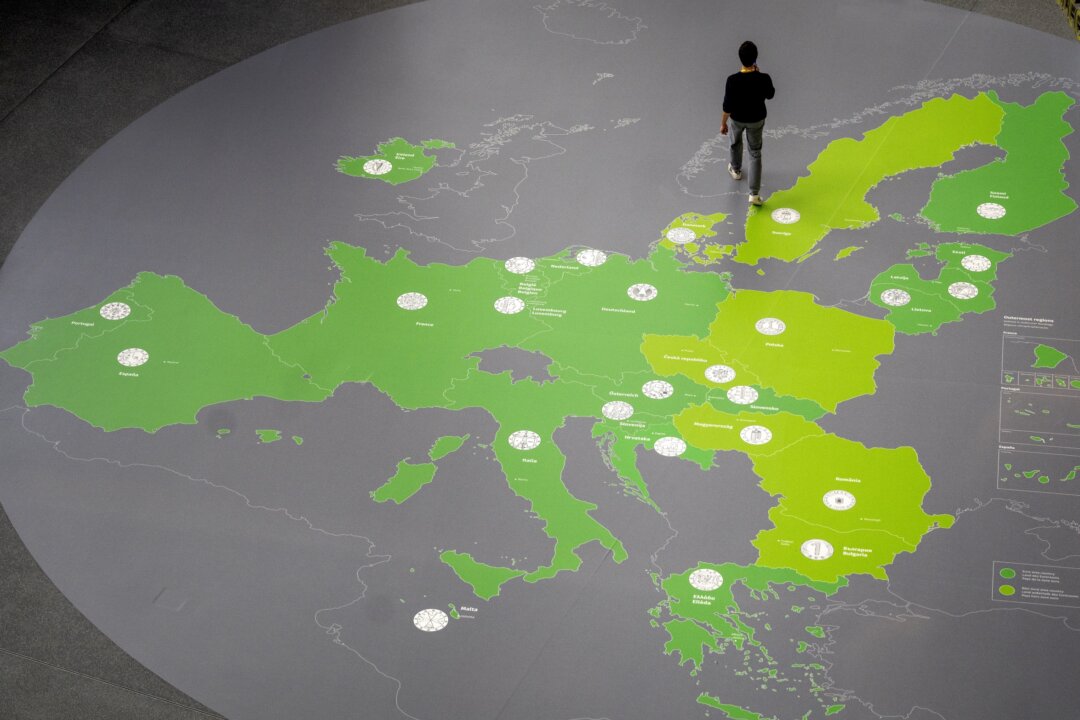A stark divergence in economic performance has emerged between the Eurozone and the United States, with the former experiencing near stagnation while the latter enjoys a robust surge in its gross domestic product. This critical economic contrast highlights the varied challenges and successes confronting major global economies, setting a new tone for international trade relations and future financial forecasts. The intricate interplay of fiscal policies, trade dynamics, and geopolitical considerations continues to shape the global economic trends, influencing investor confidence and consumer behavior worldwide.
In the second quarter of 2025, the Eurozone economy demonstrated only a meager 0.1 percent growth from the previous quarter, signaling a significant deceleration across the 20-nation bloc. This muted performance underscores persistent underlying weaknesses within the region, which saw its growth rate sharply decline from 0.6 percent in the first quarter. Individual member states painted a mixed picture, with Spain leading the modest gains at 0.7 percent and France showing 0.3 percent growth, while economic powerhouses Germany and Italy each contracted by 0.1 percent, exacerbating internal disparities.
Conversely, the US GDP growth presented a far more optimistic outlook during the same period, recording an impressive 3 percent annualized surge from April to June. This substantial rebound effectively reversed a 0.5 percent contraction experienced in the first quarter, surpassing economists’ expectations and showcasing the resilience of the American market. The surge was primarily fueled by a notable 30 percent reduction in imports, signaling an adjustment after earlier tariff-induced stockpiling, alongside a healthy 1.4 percent increase in vital consumer spending, driving domestic demand.
The current landscape of international trade is complex, marked by recent agreements and lingering uncertainties. A trade deal struck between the United States and the European Union aimed to alleviate immediate tensions but concurrently imposed 15 percent trade tariffs on EU exports to the U.S. market. This measure is widely anticipated to exert a downward pressure on future Eurozone economy growth, as European firms remain cautious regarding investment given the unresolved details of the agreement and its pending ratification by EU members.
Adding to the nuanced economic picture, the International Monetary Fund (IMF) recently adjusted its full-year growth forecast for the euro area upwards, largely attributable to an unexpected surge in Irish pharmaceutical exports during the first quarter. Despite this positive revision, the fund issued a strong caveat: broader euro area demand remains persistently subdued. The IMF continues to highlight significant downside risks, including potential escalations in trade tariffs and ongoing fiscal strains that could undermine any perceived benefits from recent policy adjustments.
For 2025, the International Monetary Fund projects that euro area GDP will expand by 1 percent, followed by 1.2 percent in 2026, marking a 0.2 percentage point upgrade for the current year from its April forecast. This revision, however, is heavily skewed by what the IMF termed a “historically large” spike in Irish pharmaceutical shipments to the United States, driven by trade front-loading and new production facilities. Without Ireland’s exceptional contribution, the upgrade for the euro area would have been a mere 0.1 percentage point, emphasizing the fragility of the broader regional recovery.
Looking across the Atlantic, the International Monetary Fund also revised its US GDP growth forecast, anticipating 1.9 percent growth for 2025 and 2 percent for 2026. This upward adjustment is attributed to several factors, including lower-than-expected tariffs, a weaker dollar, and corporate investment incentives stemming from significant legislative acts. On a global scale, the IMF elevated its 2025 growth forecast to 3 percent from 2.8 percent, while simultaneously warning that high trade barriers and various geopolitical shocks continue to pose considerable risks to the overall economic outlook.
The economic outlook remains clouded by significant uncertainties that could weigh heavily on future investment decisions. The International Monetary Fund specifically warned of persistent downside risks, including the potential for renewed trade tariffs escalations, mounting geopolitical tensions across various regions, and unresolved fiscal vulnerabilities. These factors, if left unaddressed, have the potential to overshadow any positive impacts derived from unexpected fiscal easing measures, underlining the precarious balance of the current global financial climate.






Leave a Reply